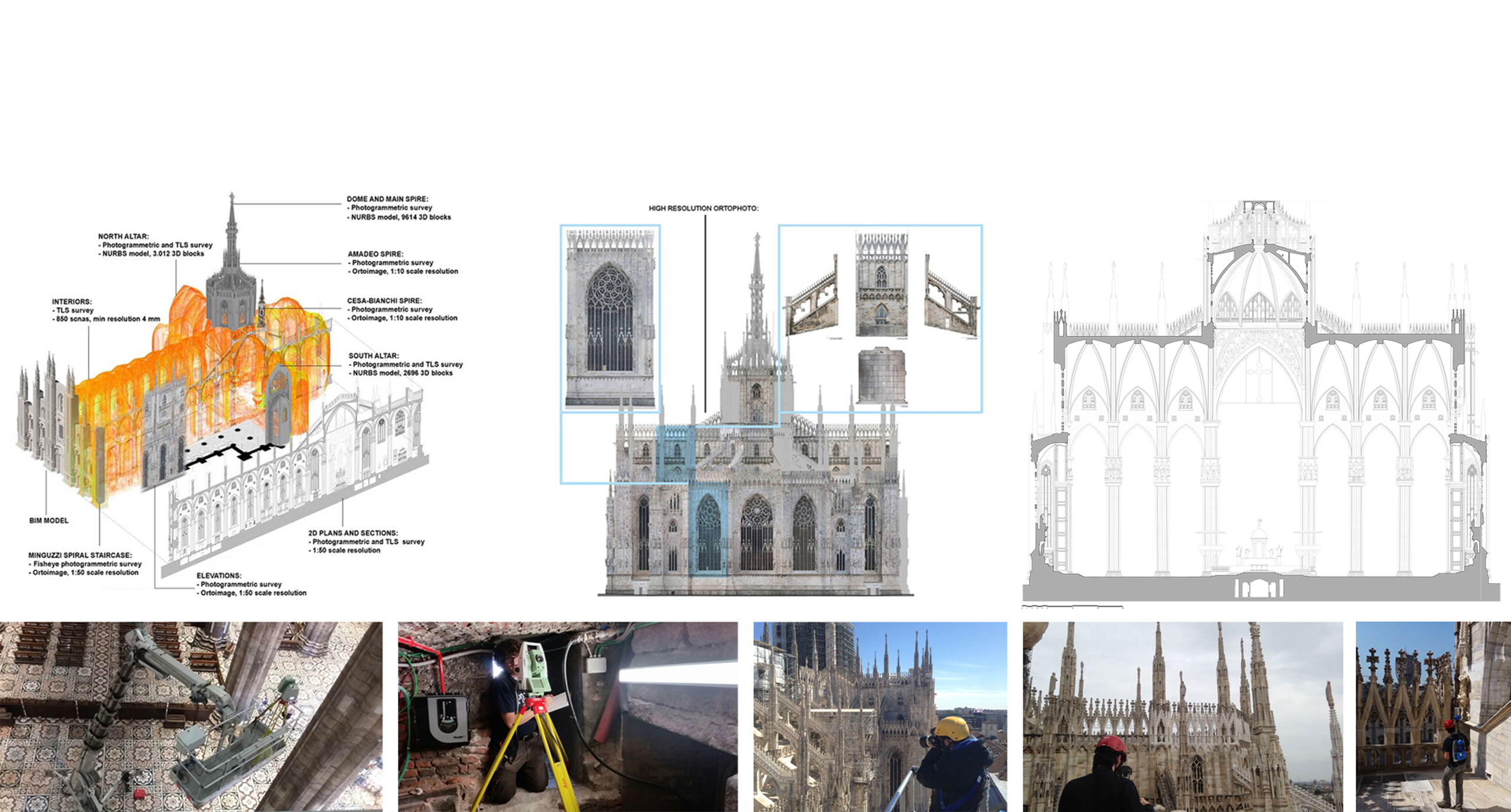
THE DUOMO OF MILAN – INDOOR AND OUTDOOR SURVEY
The scientific collaboration agreement signed by the Veneranda Fabbrica del Duomo di Milano and the Politecnico di Milano has the aim of developing joint training and research initiatives for the optimisation of the Duomo’s routine and emergency maintenance works. Beginning with an analysis of the current status of the monuments, structures and surfaces, using research and experimentation and new materials, technologies and solutions, the aim is to better safeguard the materials and to improve the efficacy and the durability of the interventions.
Specifically, the 3Dsurvey Group is responsible for the geometric surveys and the vector and raster findings of the interior and exterior parts of the cathedral. The interior was surveyed by employing laser-scanner instruments; the survey plan was devised to obtain a grid of points with a density of less than 4mm. The result was achieved by positioning the instruments in each bay of the cathedral at different heights from the ground by means of the use of a specific lifting platform. The data, which were organised during the execution of the survey stages, were provided in vector format in an AutoCAD environment to produce the technical drawings agreed with the Veneranda Fabbrica del Duomo di Milano.
The exterior of the cathedral was surveyed with photogrammetry, using professional instrumentation and lenses with the aim of achieving a uniformly rendered scale equal to 1:50. The images obtained were processed and rendered by producing very high-resolution orthophotos which covered the northern, eastern and southern façades of the Duomo. Moreover, individual photogrammetry projects were carried out at 1:20 scale for each terrace on the roof, making it to possible to represent each flying buttress, falconatura and baluster.
The vector and raster drawings depict the geometry of the church and the position of each ashlar of marble; this feature makes it possible to use them in the design, execution and update phases of maintenance works.